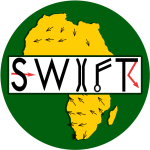Throughout Africa, lives and livelihoods are directly impacted by weather- and climate-related risks. Strengthening national meteorological and climate science capacities holds transformational potential for building climate-resilience across the continent in the coming decade. Nowcasting capability and capacity is an essential part of this goal, delivering warnings and alerts of highly unstable African storms minutes to hours in advance.
Meteosat Second Generation-based solutions including NWC-SAF (Nowcasting Satellite Applications Facility, owned by EUMETSAT) are actively being used by the South African Weather Service for 16 nations in Southern Africa. GCRF African SWIFT has demonstrated the value of these products in West and East Africa, and is supporting major weather services in the regions to establish local generation.
Our latest briefing note explores achievements of African SWIFT in advancing nowcasting across sub-Saharan Africa and outlines future opportunities and recommendations. Key messages include:
- African SWIFT shipped satellite dishes to partner countries and is supporting with the installation and operationalisation of NWC-SAF at national met services and universities, enabling nowcasting in many partner countries for the first time.
- African SWIFT has developed an environment of progress, building the capacity and capability of national meteorological services, regional training centres, and universities to work collaboratively to operationalise NWC-SAF, and to access and develop data into user-tailored products, a key aim of African SWIFT Testbed 3.
- Over time, there is significant potential for NWC-SAF use and tailored product development to spread throughout the continent, if the access to NWC-SAF in its current form, and training and collaboration activities across Africa, can be maintained.
Ultimately, support and coordination from European organisations, including the WMO, EUMETSAT and NWC-SAF, plays an integral role. This vision will result in thousands of lives saved from high impact weather across Africa and economic benefits amounting to hundreds of millions of dollars per year.
